< Page:EB1911 - Volume 10.djvu
This page has been validated.
Plate II.
FIBRES
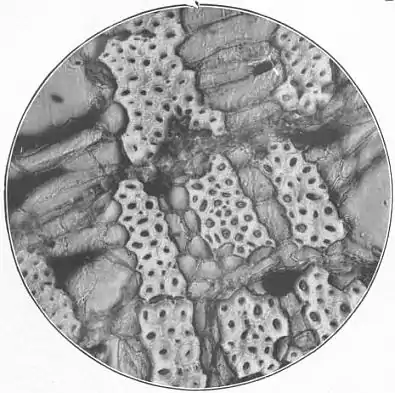 |
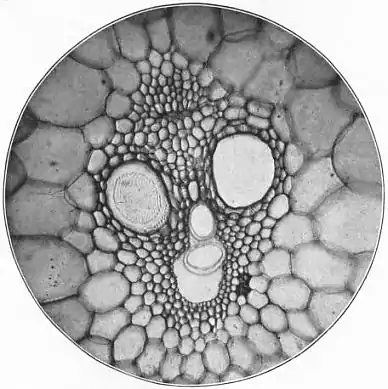 |
| Fig. 7.—JUTE. Bast bundles. Section of bast region, × 235, showing agglomerated bundles of bast fibre, each bundle representing a spinning unit or filament. |
Fig. 8.—MAIZE STEM. Zea mais. Fibro-vascular bundle in section. × 110, typical of monocotyledonous structure. |
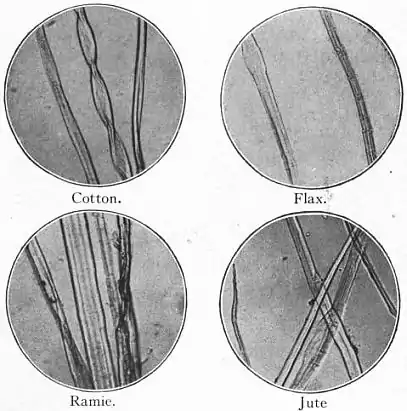 |
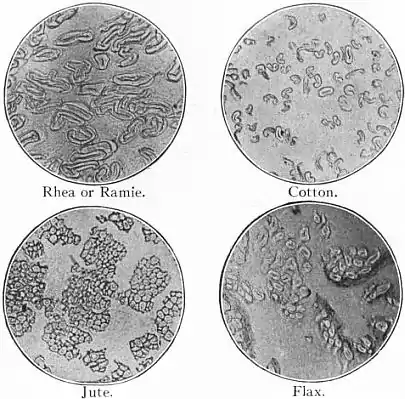 |
| Fig. 9.—COTTON. FLAX. RAMIE. JUTE. Ultimate fibres in the length, × 110. Portions selected to show typical structural characteristics. |
Fig. 10.—COTTON. FLAX. RAMIE. JUTE. Ultimate fibres—transverse section, × 110. Note similarity of ramie to cotton and jute to flax. |
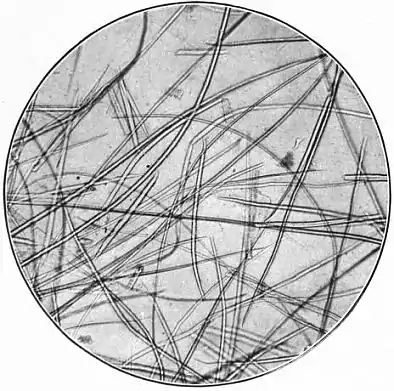 |
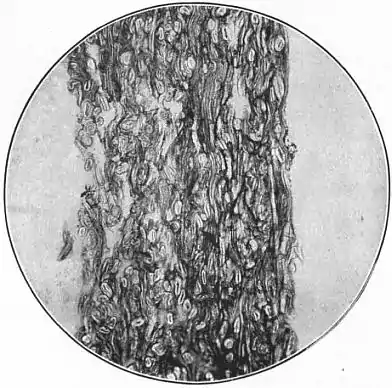 |
| Fig. 11.—ESPARTO. Cellulose. Ultimate fibres of paper making pulp. Typical fusiform bast fibres. × 65. |
Fig. 12.—SECTION OF HAND-MADE PAPER. × 110. Ultimate component fibres disposed in every plane. |
This article is issued from Wikisource. The text is licensed under Creative Commons - Attribution - Sharealike. Additional terms may apply for the media files.